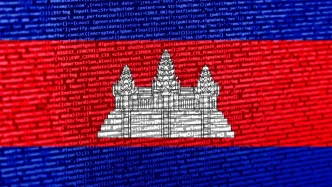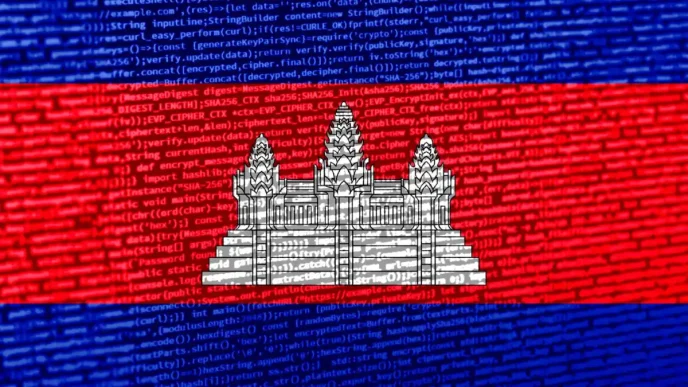In the rugged borderlands where Vietnam meets Laos, nestled among the misty peaks of the Trường Sơn mountains, access to healthcare is not just a challenge—it is a lifeline. For the ethnic minority communities scattered across remote villages in Vietnam’s Quảng Nam and Thừa Thiên Huế provinces, and their neighbours in Laos’ Sekong and Salavan provinces, medical care often means a treacherous journey across difficult terrain. Yet, in these isolated regions, a quiet revolution is underway, led by dedicated doctors, military medics, and civilian healthcare workers who are bridging geographical and cultural divides to deliver hope and healing.
This is not merely a story of medical intervention; it is a testament to the enduring solidarity between Vietnam and Laos, a bond forged through shared history and strengthened by acts of compassion that transcend national boundaries. From midnight deliveries in freezing forests to charity wardrobes warming patients in hospital wards, the efforts of these healthcare heroes are transforming lives and reinforcing cross-border ties.
A Midnight Miracle in the Mountains
In the early hours of 27 January 2024, as a biting winter chill gripped Tây Giang District in Vietnam’s Quảng Nam Province, Dr Nguyễn Văn Quốc Trí received an urgent call. A 29-year-old ethnic Cơ Tu woman, Bríu Thị Poi, had gone into labour while en route to the clinic in Arooi Village, Ga Ry Commune. Stranded at the edge of a forest after her water broke mid-journey, she was in desperate need of help. Without hesitation, Dr Trí, a seasoned medic at the A Xan Military-Civilian Clinic, gathered his emergency bag and set off with his team into the dense, misty darkness.
Navigating treacherous paths, they reached the woman after a tense search, finding her in agony by a dirt track, surrounded by her anxious family. “I quickly reassured them and instructed her family and officers from the A Xan Border Guard Station to collect wood for a fire to keep warm and use torches to light the area for the delivery,” Dr Trí later recalled. After relentless efforts, a healthy baby girl was born at the break of dawn, her cries piercing the ancient forest. Mother and child were then safely transported to the clinic for further care.
Dr Trí’s story is emblematic of the dedication shown by healthcare workers in these remote border regions. A native of Quảng Nam, he has served at the A Xan Clinic since 2014, providing care not only to Vietnamese residents of four highland communes but also to Laotian villagers from nearby border areas in Sekong Province. His clinic, though modest in name, is equipped with modern medical devices, enabling him to handle complex cases that would otherwise require long, perilous journeys to larger hospitals.
Beyond his medical skills, Dr Trí has earned the trust of local communities by learning the Cơ Tu language, breaking down barriers of communication and fostering a deeper connection with his patients. As Major Phan Minh Xuân, Deputy Political Commissar of the A Xan Border Guard Station, noted, “His words carry great weight in the community because they are always backed by action.” For border guards, whose mission includes safeguarding national sovereignty, such trust is invaluable.
Compassion Without Borders in A Lưới
Further north, in Thừa Thiên Huế Province’s A Lưới District, another beacon of hope shines for border communities. The A Lưới District Medical Centre has become a vital lifeline for Laotian patients from remote villages in Sekong and Salavan provinces, where access to healthcare is often limited by rugged terrain and long distances. In 2024 alone, the centre recorded 380 visits from Laotian patients—a 150 per cent increase from the previous year.
Among those seeking treatment was Hồ Văn Pếp, a 67-year-old from Salavan Province, who arrived in A Lưới suffering from severe abdominal pain and rapid weight loss. Diagnosed with Type 1 diabetes, he was one of many elderly patients receiving specialised care for conditions like hypertension, arthritis, and bronchitis. Lying nearby was Quỳnh Thiệu, 64, battling multiple ailments including Type 2 diabetes and stroke complications. Despite an arduous full-day journey by motorbike through heavy rain, Thiệu expressed faith in the care he received: “I have deep trust in the brotherly bond between A Lưới and Xà Muội. The facilities are clean, and the doctors are attentive.”
The centre’s commitment extends beyond medical treatment. Inpatients and their families receive free daily meals, while a charity wardrobe offers warm clothing with the message, “Take what you need, give what you can.” For patients like Lê Thị Nhỏ, a 31-year-old Laotian mother from Sekong Province, such gestures are profoundly moving. Unable to leave her bed, she was gifted newborn clothing for her daughter, easing her worries during recovery.
Dr Hồ Bách Thắng, director of the centre, emphasised their dedication to supporting Laotian patients, many of whom come from impoverished backgrounds. The district allocates approximately VNĐ300 million annually for medical aid, including medicines and services, yet the rising number of patients is straining resources. Despite this, initiatives like free check-ups, clothing distribution, and food aid during Laos New Year celebrations continue to strengthen community ties.
A Shared Cultural Bond
The healthcare struggle in these border regions is underpinned by a shared cultural heritage. Many Laotian patients belong to the Pa Cô and Cơ Tu ethnic groups, mirroring their Vietnamese neighbours, which eases communication with medical staff—some patients even speak fluent Vietnamese. This cultural affinity, combined with the dedication of healthcare workers, has fostered a sense of kinship that transcends borders.
For residents like Sut Nhon from Laos’ Kà Lừm District, the A Xan Clinic in Vietnam is a trusted provider. “Whenever I come here, the doctors take excellent care of me, and my condition improves significantly,” he said. Similarly, Bling Mơ from Tr’hy Commune in Vietnam recalled how, before the clinic’s establishment, locals relied on shamans for healing. “Since dedicated medical workers like Dr Trí arrived, our people have had much better access to healthcare,” he noted.
In A Lưới, the Military Medical Unit of Defence Economic Brigade 92 steps in for emergencies, providing care at patients’ homes and arranging transport to the medical centre or higher-tier hospitals when needed. Such efforts underscore a broader mission: healthcare as a pillar of stability and security along the border.
Strengthening Solidarity Through Care
The impact of these initiatives extends far beyond individual patients. Nguyễn Văn Hải, vice chairman of the A Lưới District People’s Committee, highlighted how strong ties with Lao border communities contribute to national security. Dr Trần Kiêm Hảo, director of Huế City’s Department of Health, echoed this sentiment, noting that cross-border healthcare programmes have enhanced service capacity and alleviated the burden on Laotian citizens while reinforcing solidarity between the two nations.
Yet, challenges remain. The financial strain of supporting a growing number of patients tests local resources, and the physical barriers of the borderlands—treacherous roads and long distances—continue to hinder access. If additional funding or infrastructure improvements were to materialise, the reach and impact of these healthcare efforts could expand significantly, though such prospects remain speculative for now.
A Beacon of Hope
In the borderlands of Vietnam and Laos, where isolation once defined daily life, healthcare workers like Dr Nguyễn Văn Quốc Trí and the staff at A Lưới District Medical Centre are rewriting the narrative. Their tireless dedication—whether delivering a baby in a freezing forest at dawn or providing warm clothing to a shivering patient—embodies a compassion that knows no boundaries. For the ethnic minority communities on both sides of the frontier, these acts of care are not just medical interventions; they are lifelines that affirm a shared humanity.
As the mist clings to the peaks of the Trường Sơn mountains, the clinics and medical centres along this rugged border stand as beacons of hope, illuminating the path toward a healthier, more connected future. In every check-up, every emergency response, and every gesture of kindness, the deep-rooted bond between Vietnam and Laos grows stronger, proving that even in the most remote corners of the world, solidarity can heal.














